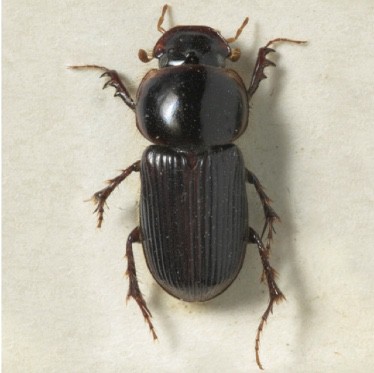
Blackheaded Cockchafer
The Blackheaded Cockchafer (Aphodius tasmaniae) is a native insect of south-eastern Australia, including Tasmania. In Victoria, Blackheaded Cockchafers are mainly active in the Western District, the Southern Wimmera, the North-Central and Central districts, the North-East and Gippsland.
They appear to be pests in areas where the annual rainfall exceeds about 480 mm. The Blackheaded Cockchafer has become an important pest of improved lawns, golf courses and parks.
Adult Cockchafer beetles are dark-brown to black in colour, have long, fine legs and are approximately 10 to 11 mm long. The cockchafer larvae (grubs) are white or greyish-white in colour and have soft bodies.
Blackheaded Cockchafer larvae tend to curl into a C-shape on exposure or when handled, hence they are often referred to as “curl” grubs. Their gut contents can often be seen through the external covering in the medium to larger larvae. Fully grown larvae are 15 to 20 mm long. The cockchafer larvae of all other pasture cockchafers in Victoria have reddish or yellow head capsules.
The Cockchafer has a one-year life cycle. They emerge from the ground and fly during January to February dusk on calm, mild evenings. They are often attracted to lights at night during this time.
The insects may also be noticeable when large numbers burrow into animal manure, often pulverising and burying it.
If you think you have a Cockchafer problem, the Lawn Addicts team can confirm the grass insect identification and recommend professional lawn care products, available online.
Message us for advice about other products.
